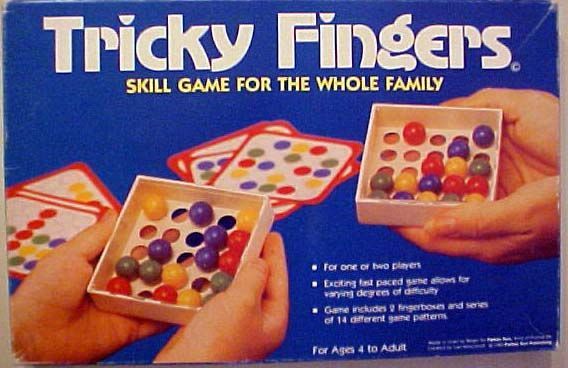Tricky Fingers (1982) Board Game
Tricky Fingers is a board game that was released in 1982 by designers J. Moschkowitz and Ivan Moscovich. The game is all about dexterity and involves players trying to build patterns with their fingers in a race against time. It is a fast-paced game that is suitable for players aged 3 and up.
Game Components of Tricky Fingers
How To Setup Tricky Fingers
To set up the game, each player receives a playing board and a set of design cards. The objective is to replicate the patterns shown on the design cards by moving the colored balls from the holes in the bottom of the board to the corresponding positions on the board.
Gameplay Mechanics and Game Objective
– Kinesthetic awareness and bilateral coordination
– Perceptual motor skills
– Pattern duplication
– Replicate patterns from the design cards by moving colored balls
– Can be played individually or in races.
Player Experience
**Tricky Fingers** is known for its deceptive simplicity. Players, especially children, often underestimate the challenge, only to discover that it requires a significant amount of skill and concentration. The game is great for developing motor skills and can be quite engaging, making it a favorite among occupational therapists and parents alike.
Pros
Cons
Personal Thoughts on Tricky Fingers
**Tricky Fingers** is ideal for children and individuals looking to improve their fine motor skills and hand-eye coordination. It is also a great tool for occupational therapists and educators seeking to engage their students in a fun and challenging activity. The game’s ability to be played both individually and competitively adds to its versatility, making it a valuable addition to any game collection or therapeutic toolkit.
We are supported by our audience. When you purchase through links on our site, we may earn an affiliate commission, at no extra cost for you. Learn more.

